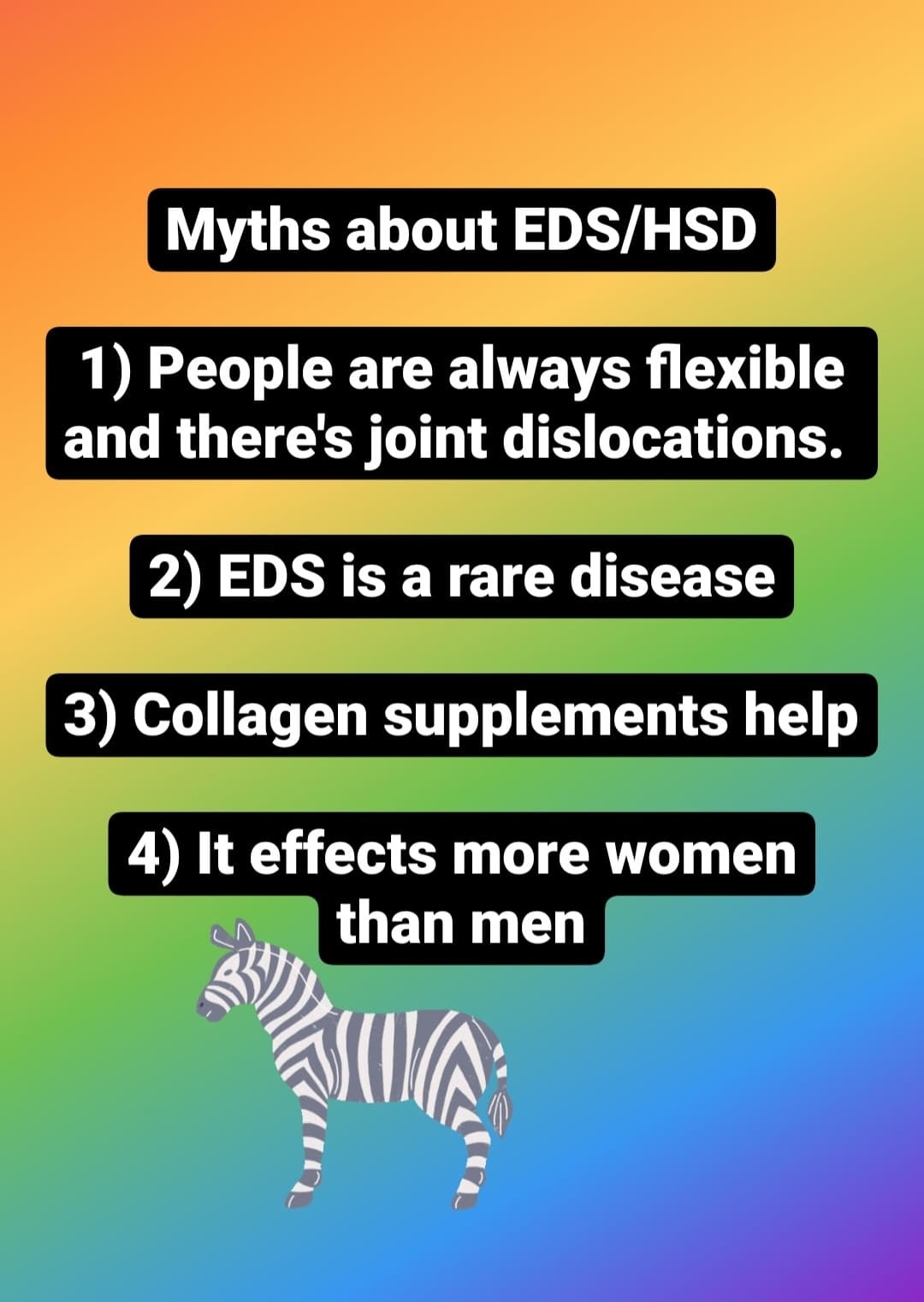MY EDS Challenge Day 5- Myths in Hypermobile Life
- May 5, 2022, 5:47 p.m.
- |
- Public
I am taking part in #MyEDSChallenge and #MyHSDChallenge with the Ehlers Danlos Society. Since May is EDS awareness month, every day I will be sharing something about myself and my EDS journey to drive further awareness and community.
Day 5- Myths I’ve heard
1) People with EDS are always pretty flexible & everyone with it dislocates joints. Surprisingly, no. This is the main reason I work so hard to educate folks. I was misdiagnosed for nearly ten years because I do not dislocate joints. Many people with EDS do, but EDS is about so much more than joints. Connective tissue is everywhere in the body and affects to many systems and soft tissues. The hallmark feature of EDS that should be emphasized is chronic pain. Pain from dislocations, vessel issues, nerve issues, muscle over exertion, prolapses, etc. Hypermobility does not always equal flexibility. Sometimes muscles tighten up so much to stabilize and over compensate that many zebras cannot do cool party tricks or at least the way they used to.
2) EDS is a rare disease. Yes and no. The 12 types that have genetic tests available are relatively pretty rare. Some 1 in 50,000 people or even 1 in 100k. The most common type of EDS (hEDS and HSD) are actually very common in the general public due to the wide varieties of presentations and severities. It is estimated that it’s closer to 1 in 500 but the numbers have yet TBD. EDS is rare but its rarely diagnosed correctly and rarely understood by doctors.
3) Collagen supplements can help people with EDS. If only it were that easy. Collagen digested does not translate to collagen repair in the body. Your body breaks down complex proteins like collagen into simpler amino acids to rebuild/repair tissues. Since people with EDS/HSD have the wrong instruction manuals to repair connective tissue, it keeps getting made wrong. And it will keep getting made wrong over and over again no matter how much you give us. Cool huh?
4) EDS affects more women than men. No again. An equal number of men and women have EDS since many of the types are passed on in an autosomal dominant fashion. This means you only need one parent to have it to get it. And theres a 50% chance of giving a kid EDS each pregnancy if a parent has EDS. Women tend to have worse symptoms than men overall and tend to be more vocal when things go wrong with their bodies than men. That’s why you keep seeing more women talking about EDS. Hormones may play a huge role in connective tissue laxity also.




No comments.